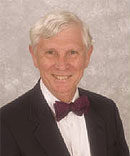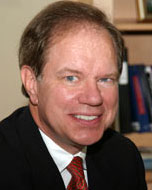A federal court ruled in 1985 that a cross of lights on a Greenwich firehouse during Christmas time had to come down because it was too “religious.” Same principle should apply to eruvim in Westhampton Beach and elsewhere.
 The town argued that a “secular purpose” was served by the 4 ft. X 4 ft display that had been used for 40 years since the “blaze of light” added to the “traditional Christmas celebration.”
The town argued that a “secular purpose” was served by the 4 ft. X 4 ft display that had been used for 40 years since the “blaze of light” added to the “traditional Christmas celebration.”
However, District Judge Ellen Burns said in a 4,271-word decision that the cross was too powerful a religious symbol, representing the crucifixion of Jesus Christ, whose birthday was being celebrated.
“Because the cross has no meaning in the context of the celebration of Christmas except as a religious symbol, there can be no secular purpose for including it in a Christmas display,” she wrote.
We agree with Judge Burns so we can’t understand why the same principle does not apply in the case of eruvim, the Orthodox Jewish boundaries that are the subject of millions of dollars of legal wrangling in the Hamptons.
The East End Eruv Assn. and its allies are claiming that a “secular purpose” is served by the proposed boundary for Southampton, Westhampton Beach and Quogue since it lets the observant push wheelchairs and baby carriages and carry keys, among other behavior.
But opponents, including the Freedom From Religion Foundation, say “The religious significance of eruvim is unambiguous and indisputable…they have no meaning except as a visual, public communication of a purely religious concept for religious believers of a single faith.”
“Secular” is Tiny Part of Meaning of Eruvim
Certain behaviors such as pushing wheelchairs or baby carriages are enabled but that is an infinitesimal part of the meaning of an eruv which turns the public domain into a private domain for believers.
An eruv supposedly has been erected in WHB (although evidence of the required lechis has yet to be found).
Such a demarcation would serve as a powerful ad for the Hampton Synagogue of WHB which first proposed an eruv in the village in 2008.
“Run to your favorite East End real estate agent posthaste and buy up all the homes you can find within the WHB eruv,” wrote columnist “Mr. Sneiv” in the Feb. 20 Dan’s Papers, the free weekly newspaper (and blog) that is widely circulated in the Hamptons.
Sniev notes that eruvim have been argued “vociferously” since 2008 and “I can only think of one reason why there would be any opposition to such a benign use of the utility poles: non-Jewish persons living in the area fearing the eruv would attract masses of Orthodox Jews to WHB as a result. And they may be right.”
Sniev says he and his real state friends believe that “many Orthodox Jews have been waiting in the wings to make sure that the court indeed upholds the eruv before making a decision to buy or rent in WHB.”
He adds, “BUY, BUY, BUY in WHB before it’s too late and prices skyrocket.”
Wheelchairs, Carriages Are a Smokescreen
Pushing carriages and wheelchairs is a phony smokescreen for the larger issue of building membership of the Hampton Synagogue. Orthodox can “hint” that a goyim push a wheelchair or baby carriage. They can carry keys on a bracelet. They can get dispensations from rabbis for these and other behaviors. But some courts have fallen for this ruse hook, line and sinker.
Two New Jersey federal district courts addressed the legality of eruvim and came to different conclusions.
The more reasonable decision, a 23,424-word finding by Judge
 Bassler Bassler |
William Bassler in 2001, ordered the Tenafly Eruv Assn. Inc. to remove all traces of the eruv.
Said Bassler: “The Court is convinced that the fundamental reason animating the Borough Council’s decision was its concern that public property should not be permanently allocated to a religious purpose.”
He added that the borough was “not targeting Orthodox Jews but was instead targeting religious installations on property to which the public typically does not have the right of access…it was a legitimate legislative decision by an elected representative body…”
Judge Bassler’s decision includes thousands of words of testimony by local citizens and representatives of TEAI arguing both sides of the issue. Five Borough Council members and Mayor Ann Moscovitz were quoted at length as to why they opposed the eruv.
Those who wish to express an opinion on the legality of eruvim should read the Bassler decision as well as the Appeals Court decision of Oct. 24, 2002 that reversed what he had concluded.
Appeals Court Found “Secular” Purpose
Circuit Judge Thomas Ambro, in a 16,981-word decision Oct. 24, 2002, wrote that “Allowing the eruv to remain in place serves the secular purpose of complying with the Free Exercise Clause, does not have the effect of advancing religion because no reasonable, informed observer would perceive an endorsement of religion, and involves no government entanglement with religion because the Borough will not monitor or support the maintenance of the eruv.”
Ambro said, “We conclude that the plaintiffs have not met their burden of showing that the affixing of lechis to utility poles is ‘sufficiently imbued with elements of communication’ to be deemed expressive conduct.” And this: “There is no evidence that Orthodox Jews receive a message or ascertain the eruv’s boundaries by looking at the lechis.”
 Ambro Ambro |
That is just total baloney. The lechis, “unobtrusive” as they may be in the case of WHB, might as well be neon signs proclaiming, “WHB Extends a Special Welcome to Orthodox Jews.”
The Ambro decision says a “reasonable, informed observer” would not perceive “an endorsement of religion” from the lechis. Unfortunately, the Jan. 6, 2015 U.S. Court of Appeals decision backing the eruv in WHB picks up that phrase from the Tenafly decision.
It’s false. After seven years of arguing and watching as legal bills on this battle top the $1 million mark, it would be hard to find a resident of SH, WHB and Quogue who does not know that an eruv is a giant ad for a religious sect, even though great pains are being taken to make the lechis “almost invisible.”
New York District Judge Kathleen Tomlinson still has to hear separation of church and state arguments and other suits are working their way through the courts. EEEA is appealing via the New York State Supreme Court the SH Zoning Board of Appeals decision that lechis are signs and are not permitted. SH expects the suit to end up in federal court.
Those who want to understand the unfairness of this legal onslaught should also read the 34-page “Strings Attached” essay of UCLA Law Prof. Alexandra Susman that documents her view that eruvim are unconstitutional.
WHB Trustees Meet Tonight; Eruv not on Agenda
Trustees of WHB will meet tonight at 7 p.m. The agenda lists 27 items such as accepting department reports; approving shared computer services with Southampton; renewing Beach Bakery music permit; renewing Tonino’s outdoor dining permit; renewing Starr Boggs outdoor music permit; appointing part time seasonal police officer and authorizing Mayor Maria Moore to sign contract for security cameras.
There will be no discussion of eruv litigation unless someone from the audience brings it up.
Moore and village lawyer Stephen Angel said the trustees are going to have a stricter policy about remarks by villagers.
“This stuff about yelling comments from the audience is just disruptive,” he said. The public part of the board meeting Feb. 5, when residents protested a plan to have a police commissioner besides a police chief (at a total cost of about $350K), resulted in “pandemonium,” he said.
Dean Speir said the board had allowed public comment at it work sessions for decades. Angel said residents should only speak from the podium next to the dais at designated periods and should give their names and addresses.


 Husch Blackwell Strategies has added FleishmanHillard alum Michael Slatin as a principal in its public affairs group.
Husch Blackwell Strategies has added FleishmanHillard alum Michael Slatin as a principal in its public affairs group. Rory Cooper, a veteran Republican operative and policy specialist, has joined Teneo’s Washington office as senior managing director in its strategy & communications practice.
Rory Cooper, a veteran Republican operative and policy specialist, has joined Teneo’s Washington office as senior managing director in its strategy & communications practice. Brian Fallon, who served as national press secretary for Hillary Clinton’s 2016 presidential run, is signing on next month as Vice President’s Kamala Harris’ campaign communications director.
Brian Fallon, who served as national press secretary for Hillary Clinton’s 2016 presidential run, is signing on next month as Vice President’s Kamala Harris’ campaign communications director. TikTok is nothing more than a Chinese propaganda tool that poses “a grave threat to America’s national security and, in particular, impressionable children and young adults,” say two Congressmen who want the platform registered as a foreign agent.
TikTok is nothing more than a Chinese propaganda tool that poses “a grave threat to America’s national security and, in particular, impressionable children and young adults,” say two Congressmen who want the platform registered as a foreign agent. Public Strategies Washington has added Abbie Sorrendino, a former aide to now Senate Majority Leader Chuck Schumer.
Public Strategies Washington has added Abbie Sorrendino, a former aide to now Senate Majority Leader Chuck Schumer.


 Have a comment? Send it to
Have a comment? Send it to 
No comments have been submitted for this story yet.